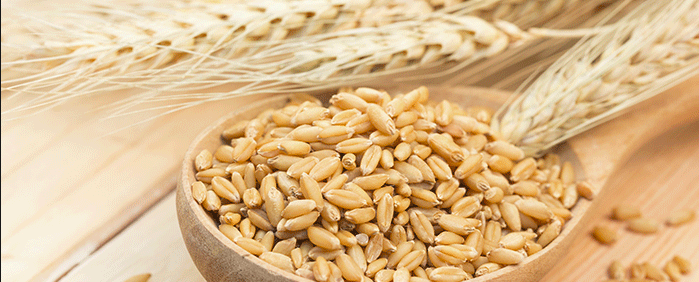
1. What is gluten?
Gluten is a generic term for the proteins found in certain cereals: rye , oats , wheat , barley , kamut, spelled. The gluten proteins which cause celiac disease are the gliadins of wheat and spelled (cereal close to wheat), the secalins of rye, the hordein of barley. Gluten is formed during bread-making, during kneading. Its property is to give volume and elasticity to bakery products, giving them a soft texture.
2. What is gluten intolerance?
Gluten intolerance or celiac disease does not cause an immediate violent reaction. Ingestion of gluten causes an abnormal immune response, leading to the production of antibodies against gluten proteins. This creates an inflammatory reaction at the level of the cells of the intestinal villi, small structures of the intestine which allow the absorption of most of the nutrients, vitamins and minerals. This involvement of the intestinal villi which can go as far as their complete destruction (villous atrophy) impairs the absorption of nutrients. This attack causes various symptoms: fatigue, anemia , mood disorders, weight loss , osteoporosis.
3. What symptoms?
In infants, celiac disease generally manifests itself at the time of food diversification and therefore of the introduction of gluten into the diet by chronic diarrhea with loose stools, anorexia (refusal to eat), vomiting , a bloated abdomen, a stop in weight gain and then growth. In addition, the child is pale, sad, tired and may lag behind in his psychomotor development.
However, this classic picture of the disease is hardly seen today thanks to early diagnosis. Developed in the 1990s, blood testsare performed fairly quickly in front of relatively minor digestive symptoms: unusual stools, decreased appetite, insufficient weight gain or non-digestive symptoms (repeated infections, tooth enamel abnormalities, anemia due to iron deficiency that does not correct despite treatment). In these situations, a blood test for IgA transglutaminases, characteristic of the disease, makes it possible to make the diagnosis quickly. This will then be confirmed by an intestinal biopsy. In the absence of symptoms, the diagnosis of celiac disease can also be made following a screening in the family members of a patient or in children who present a pathology frequently associated with celiac disease.
The main symptoms include:
- Cramps, joint and muscle pain, Raynaud’s syndrome
- Deficiencies: Anemia , poor absorption of vitamins B and D
- Behavioral disorders: Arrhythmia , anger, depression , sleep disturbances
- Bowel disorders: Bloating , colon cancer , constipation , diarrhea , diverticula
- Gum disease, bad breath
- For women: hormonal imbalance, urinary tract infection, infertility, painful periods
- Asthma , diabetes , chronic fatigue, thyroid , obesity or thinness.
It is thus well established that the probability of having a celiac disease is multiplied by ten in the brother or sister of a person presenting the disease compared to the general population. The risk is also higher in the children of an affected person. Furthermore, we know that 3 to 7% of children who have insulin-dependent diabetes also have celiac disease and that this affection is also more frequent in certain pathologies, in particular in children with Down’s syndrome.
4. What treatment?
Currently, there is no medication to treat celiac disease. The only treatment is to adopt a gluten-free diet for life by removing wheat, rye and barley from the diet. The objectives are to:
- Eliminate the symptoms of celiac disease.
- Improve the nutritional status of the patient.
- Allow harmonious growth.
- Limit the risk of long-term complications.
Today, there is no legal obligation to mention gluten intake on food. Some manufacturers indicate however the absence of gluten in their product by affixing a logo, namely a “ear of wheat crossed in a circle” which means that the product on which it is affixed is free of gluten.
It is however necessary to decode all the names under which gluten can hide: “starchy materials”, “modified starches”, “vegetable proteins”, “vegetable protein binders”, etc. Gluten is used as a binder. This is why these ingredients are used in many processed foods: canned meats, 0% yogurt, breaded fish, certain soy sauces and vegetable broths.
The foods to avoid are therefore:
- Wheat: wheat starch, burger, breadcrumbs, white flour, wheat flour, wheat germ, pasta, cakes, bread, semolina, pizza, quiche .
- Oats.
- Barley: beer.
- Spelled.
- The Rye.
The foods that can replace them are:
- Rice.
- The corn.
- Potatoes and potato starch.
- Soy: tofu.
- The buckwheat.
- Quinoa.
- Millet.
- Sorghum.